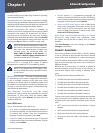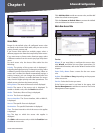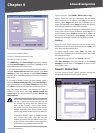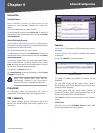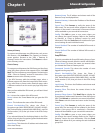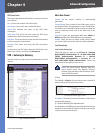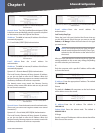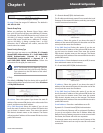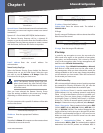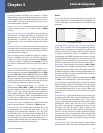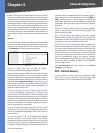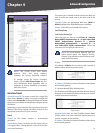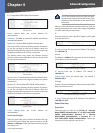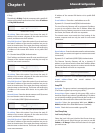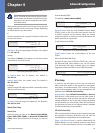
Chapter 4
Advanced Configuration
37
10/100 4-Port VPN Router
Local Security Group Type > IP Range
IP range Enter the range of IP addresses. The default is
192.168.1.0~254.
Remote Group Setup
Before you configure the Remote Group Setup, make
sure your VPN tunnel will have two different IP subnets.
For example, if the local VPN Router has an IP scheme of
192.168.1.x (x being a number from 1 to 254), then the
remote VPN router should have a different IP scheme,
such as 192.168.2.y (y being a number from 1 to 254).
Otherwise, the IP addresses will conflict, and the VPN
tunnel cannot be created.
Remote Security Gateway Type
Select the type you want to use: IP Only, IP + Domain
Name(FQDN) Authentication, IP + E-mail Addr.(USER
FQDN) Authentication, Dynamic IP + Domain
Name(FQDN) Authentication, or Dynamic IP + E-
mail Addr.(USER FQDN) Authentication. Follow the
instructions for the type you want to use.
NOTE: The Remote Security Gateway Type you
select should match the Local Security Gateway
Type selected on the VPN device at the other
end of the tunnel.
IP Only
The default is IP Only. Only the device with a specific IP
address will be able to access the tunnel. Select IP address
or IP by DNS Resolved.
Remote Security Gateway Type > IP Only
IP address Select this option if you know the static IP
address of the remote VPN device at the other end of the
tunnel, and then enter the IP address.
IP by DNS Resolved Select this option if you do not
know the static IP address of the remote VPN device but
you do know its domain name. Then enter the remote
VPN device’s domain name on the Internet. The Router
will retrieve the IP address of the remote VPN device via its
public DNS records.
IP + Domain Name(FQDN) Authentication
The IP address and domain name ID must match the Local
Gateway of the remote VPN device, and they can only be
used for one tunnel connection.
Remote Security Gateway Type > IP + Domain Name(FQDN)
Authentication
IP address Select this option if you know the static IP
address of the remote VPN device at the other end of the
tunnel, and then enter the IP address.
IP by DNS Resolved Select this option if you do not
know the static IP address of the remote VPN device but
you do know its domain name. Then enter the remote
VPN device’s domain name on the Internet. The Router
will retrieve the IP address of the remote VPN device via its
public DNS records.
Domain Name Enter the domain name as an ID (it cannot
be a real domain name on the Internet).
IP + E-mail Addr.(USER FQDN) Authentication
Remote Security Gateway Type > IP + E-mail Addr.(USER FQDN)
Authentication
IP address Select this option if you know the static IP
address of the remote VPN device at the other end of the
tunnel, and then enter the IP address.
IP by DNS Resolved Select this option if you do not
know the static IP address of the remote VPN device but
you do know its domain name. Then enter the remote
VPN device’s domain name on the Internet. The Router
will retrieve the IP address of the remote VPN device via its
public DNS records.
E-mail address Enter the e-mail address as an ID.
Dynamic IP + Domain Name(FQDN) Authentication
The Local Security Gateway will be a dynamic IP address,
so you do not need to enter the IP address. When the
Remote Security Gateway requests to create a tunnel with
the Router, the Router will work as a responder.
The domain name must match the Local Gateway of the
remote VPN device and can only be used for one tunnel
connection.




